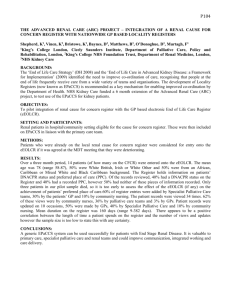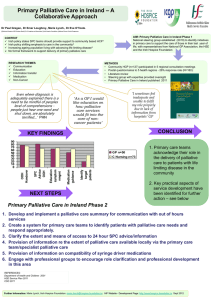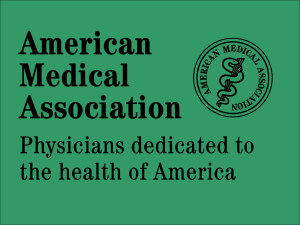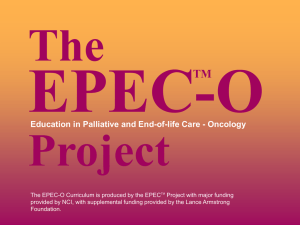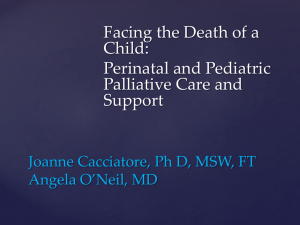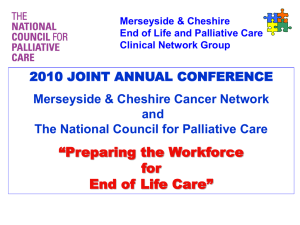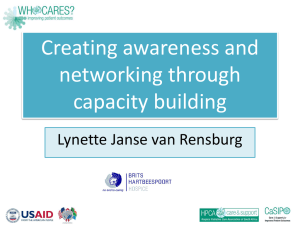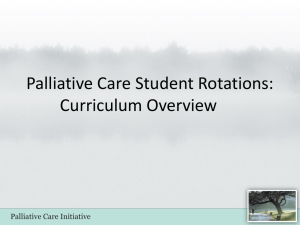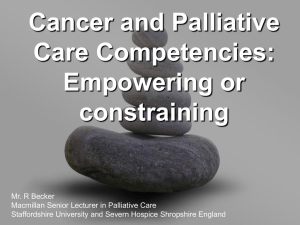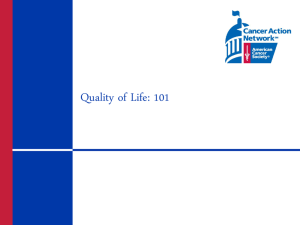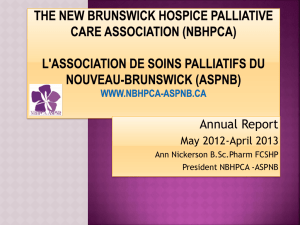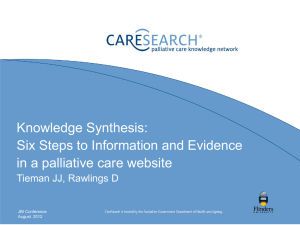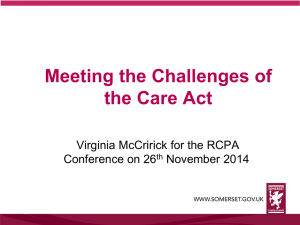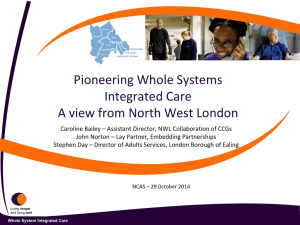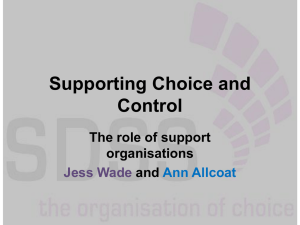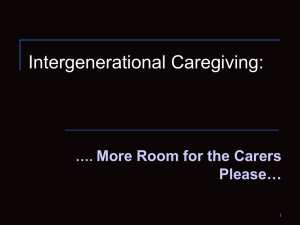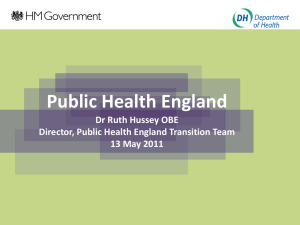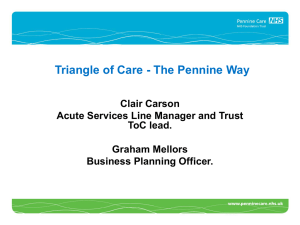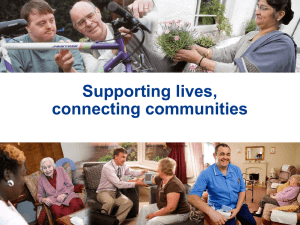Fiona Hicks (What next)
advertisement
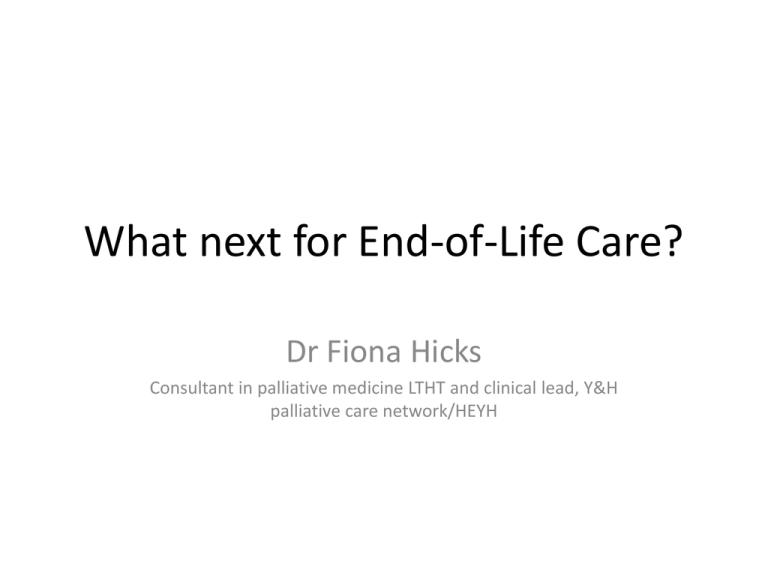
What next for End-of-Life Care? Dr Fiona Hicks Consultant in palliative medicine LTHT and clinical lead, Y&H palliative care network/HEYH Outline • • • • • • • New Structures and their impact Refreshing the End of Life Care Strategy Integration of health and social care EPaCCs Future Hospice Commission Learning from the LCP Education and training Influencing for change • • • • • • Clinical leadership CQC Data and benchmarking (PHE) Links with long-term conditions Transition from adolescence Dying Matters New structures and their impact National • National clinical director • NHSIQ – EPaCCs, transform programme (acute hospitals) • Leadership Alliance – good care in the last days of life, project on terminology, NICE guidelines 2016 New structures and their impact – Regional • • • • NHS England Area Teams Strategic Clinical Network HEYH End of life care network? New structures and their impact Local • • • • CCGs Locality groups HWBs Providers…… Refreshing the EoLC Strategy (2008) “Ambition for high quality in end of life care” • Due for publication this spring – five themes - Community engagement - Patients and carers feeling supported and able to cope - Professionals feeling supported and able to learn and provide care - Addressing inequity and differences in practice - Developing and improving systems that support efficient and effective palliative and end of life care Integration of health and social care • Pilot sites • Not just around palliative and end of life care • Personal health budgets EPaCCS Electronic palliative care co-ordination systems • Evidence from an independent economic evaluation of EPaCCS suggests a correlation between EPaCCS implementation and the number of people being able to die in the community in line with their wishes with: - An additional 90 deaths occurring in a person’s usual place of residence per 200,000 population each year, over and above the underlying increase in rates being experienced across England. - Can save at least £35,910 per 200,000 population each year - Recurrent savings after four years will be over £100k pa and cumulative net benefit over 4 years of c.£270k for a population of 200,000 people Source: Economic Evaluation of the Electronic Palliative Care Coordination System (EPaCCS) Early Implementer Sites. NHS Improving Quality. May 2013. EPaCCs EPaCCS • Multi-professional workforce training is required to help: - Identify the patients (and their carers). - Have the conversations with patients, family and carers in order establish their preferences for care and advance care planning. - Record them on EPaCCS in order to coordinate them between professionals. Implementation 2009 - 2012 Future Hospice Commission • Challenge to hospices to look at their role in palliative and end of life care Learning from the LCP • Clinical advisory group - what good care in the last days of life should look like • Terminology – what palliative care and end of life care mean to people (SCIE) • NICE guidance 2016 • National Voices developing a narrative on person-centred care at end of life • …….. Education and training • • • • • • • Underpins everything……. Starting the conversation Involving patients/carers Shared decision-making Role of HEYH Role of HEIs Role of employers Influencing for change…….. Clinical leadership • • • • • • • Need to engage…. Use structures Use data Be tenacious Share good practice Develop ideas Leadership training CQC • Changed practice around inspections • End of life care is one of eight priority areas • Opportunity to influence Trust Boards and raise the profile of EoLC • Learning from others Data and benchmarking (PHE) • • • • • Data is important Information is essential Clinicians may need to interpret data Involve public health colleagues NEoLCIN – VOICES survey, data on DiUPR Links with long-term conditions • • • - End of life care is needed in all LTCs Link in with other work in your locality Links with the Strategic Clinical Network Cardiovascular and renal Cancer Mental health, dementia and neurology Women’s and children’s (transition) Transition from adolescence • Links to long term conditions • Overlap with paediatric palliative care http://www.togetherforshortlives.org.uk/professionals /projects/project_two Dying Matters The road ahead…….
